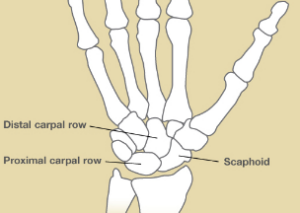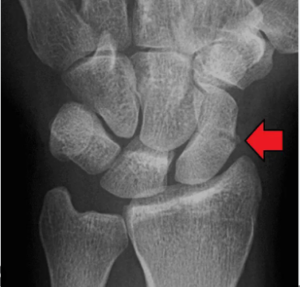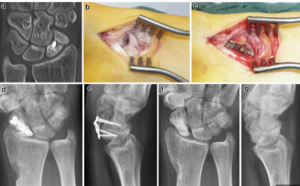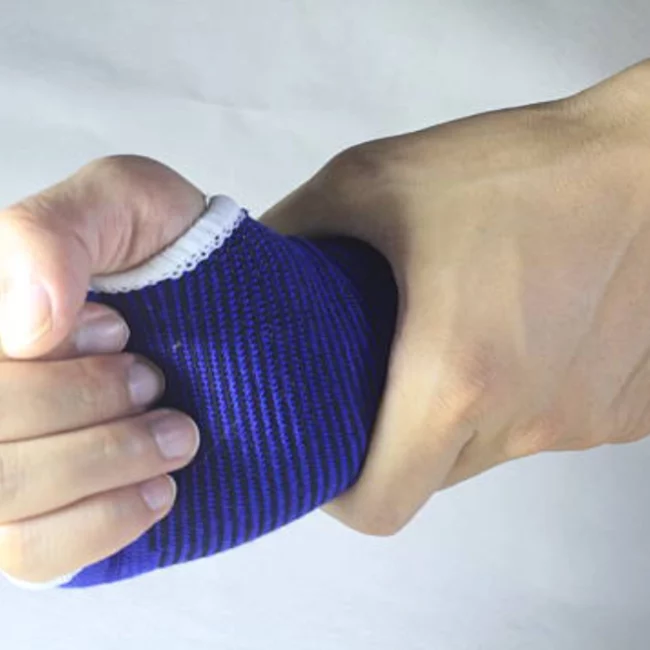
Understanding Scaphoid Fractures: Causes, Symptoms, and Treatment
A scaphoid fracture is a common wrist injury. A scaphoid fracture is a break of the scaphoid bone in the wrist. It can disrupt daily life and limit wrist function. Dr. Marouane Bouloudhnine, Dubai’s leading hand-to-shoulder specialist, offers expert care to ensure a full recovery.
What is a Scaphoid Fracture?
The Scaphoid is a small wrist bone between the radius and the trapezium-trapezoid complex. It plays a key role in wrist mobility and strength. When fractured, it disrupts the normal wrist mechanics. It causes pain, weakness, and limited movement.

Without proper care, the fracture may not heal correctly.
Causes of Scaphoid Fractures
Scaphoid fractures usually happen due to indirect trauma, such as:
- Falls with the wrist extended (e.g., falling off a bike).
- Sports injuries involving forceful wrist impact (e.g., catching a ball).
The symptoms can be mistaken for a sprain, leading to delayed treatment.
Symptoms of a Scaphoid Fracture
The signs of a scaphoid fracture often include:
- Significant pain in the wrist, especially during movement.
- Swelling and bruising near the base of the thumb.
- Tenderness in the anatomical snuffbox (a small depression on the back of the wrist).
- Reduced range of motion and pain when trying to move the thumb.
- Difficulty bearing weight on the wrist.
These milder symptoms often cause scaphoid fractures to go undiagnosed. It causes delays in treatment and increases the risk of non-union or improper healing.
Diagnosis of Scaphoid Fractures
Early diagnosis is crucial for proper management of scaphoid fractures. Dr. Marouane recommends a thorough clinical examination and appropriate imaging tests to confirm the diagnosis.
- Clinical Examination: The doctor will look for signs such as swelling, pain in the anatomical snuffbox, and limited wrist movement.
- Imaging Tests:

- X-rays are the initial imaging tool to detect fractures and assess any associated injuries.
- If the fracture isn’t visible on X-rays but is still suspected, a CT scan or MRI is needed. Sometimes, immobilization followed by a repeat X-ray in 7-10 days can confirm the fracture.
Treatment Options for Scaphoid Fractures
Dr. Marouane, known for his expertise in treating hand and wrist injuries, provides personalized treatment plans depending on the location and severity of the fracture.
Non-Surgical Treatment
- Immobilization: Immobilization using a cast or brace is typically recommended for stable and non-displaced fractures. This helps stabilize the bone and allows it to heal.
- Pain Management: Patients are prescribed NSAIDs or other pain-relieving medications to manage discomfort.
- Follow-Up Care: Regular X-rays or CT scans help monitor healing progress.
Surgical Treatment
Surgery is often required for fractures that are displaced, involve multiple fragments, or fail to heal with conservative treatment. Surgical options include:

- Percutaneous Screw Fixation:
- Zone 1 and 2 (Proximal pole fractures) usually require surgery due to poor healing potential without intervention. This minimally invasive procedure involves inserting a screw to stabilize the bone.
- Open Reduction and Internal Fixation:
- For fractures located in Zone 3, 4, and 5 (Scaphoid body fractures), surgery may be necessary if the fracture is unstable. A small incision allows the surgeon to align and stabilize the bone with screws or plates.
- Orthopedic Care for Zone 6 (Distal pole fractures):
- These fractures often heal well with simple orthopedic treatment, involving a short-term splint or cast. Surgery is only considered in cases involving a large articular fragment.
The Importance of Early Treatment
Delayed or inadequate treatment of scaphoid fractures leads to complications such as:
- Non-union: The bone does not heal properly, potentially requiring additional surgery.
- Avascular Necrosis: Blood supply to the bone is disrupted, leading to bone death.
- Chronic Pain and Limited Mobility: Untreated fractures can result in permanent loss of wrist function and ongoing discomfort.
Dr. Marouane Bouloudhnine emphasizes the importance of early diagnosis and treatment to avoid these complications and restore optimal wrist function.
FAQs About Scaphoid Fractures
- How long does it take for a scaphoid fracture to heal?
- Healing typically takes 6-12 weeks, depending on the fracture’s location and severity.
- Do all scaphoid fractures require surgery?
- No, only displaced or unstable fractures typically need surgical intervention.
- What happens if a scaphoid fracture is left untreated?
- It leads to chronic pain, non-union, or avascular necrosis, significantly impacting wrist function.
- Can I return to sports after a scaphoid fracture?
- With proper treatment and rehabilitation, most patients resume sports once the bone has fully healed and strength is restored.
Conclusion
A scaphoid fracture greatly impacts daily activities and overall quality of life. Dr. Marouane, an award-winning orthopedic specialist in Dubai, provides comprehensive care for wrist injuries. He ensures patients receive the best possible outcomes. Early treatment is key to preventing complications and achieving a full recovery.
If you suspect a scaphoid fracture, seek expert advice from Dr. Marouane Bouloudhnine, Dubai’s leading hand-to-shoulder specialist.
Book your consultation today!






